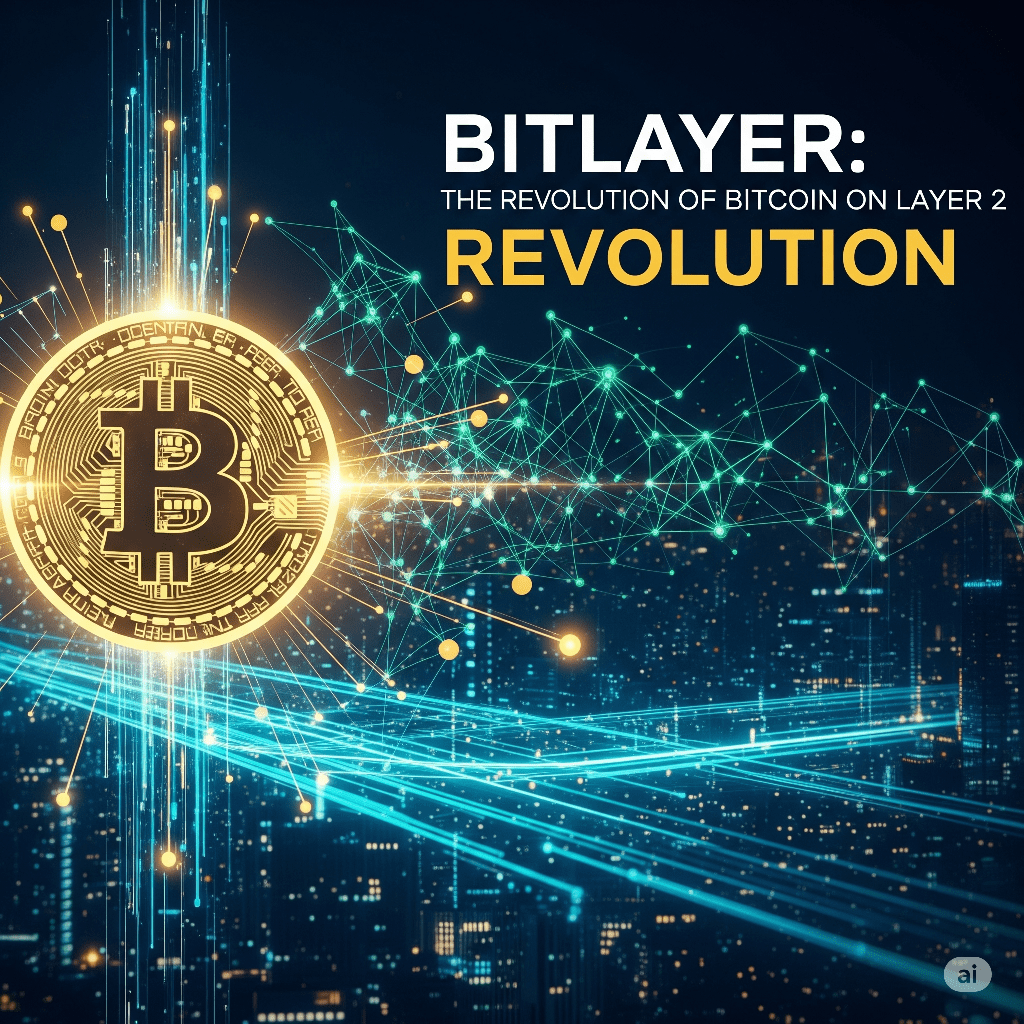#Bitlayer , what is it?
Imagine Bitcoin as an information highway. It is the safest and most reliable, but it is often congested and its tolls (transaction fees) are high. Bitlayer is somewhat like an express lane being built just above this highway. It is a layer 2 solution that aims to solve Bitcoin's scalability and programmability issues.
Unlike other solutions that sacrifice security, Bitlayer is unique in that it is the first to rely on the BitVM paradigm (Bitcoin Virtual Machine). By merging this cutting-edge technology with a fast, EVM-compatible smart contract engine, Bitlayer unleashes Bitcoin's potential for decentralized finance (DeFi).
In simple terms, Bitlayer allows developers to create and execute complex applications and smart contracts directly on the Bitcoin network, while benefiting from the unmatched security of the parent blockchain.
Its history: Rapid and sustained development
The story of Bitlayer is one of a meteoric rise. The project, introduced in 2024, quickly attracted the attention of the crypto ecosystem.
* April 2024: Launch of mainnet V1, marking the start of operations.
* March and July 2024: Bitlayer conducts two fundraising rounds (seed and series A), raising a total of 16 million dollars from renowned investors such as Framework Ventures, ABCDE Capital, Polychain, and Franklin Templeton. These fundings testify to strong confidence in the project and its founders.
* The present: A few months after the launch of its mainnet, Bitlayer shows impressive metrics, with a large number of decentralized applications (DApps) deployed, a TVL (Total Value Locked) of several hundred million dollars, and an active community.
This rapid growth positions Bitlayer as a leader in the layer 2 solutions segment for Bitcoin.
Its added value: Engineering for innovation
The added value of Bitlayer lies in its ability to offer the best of both worlds: the security of Bitcoin and the flexibility of the EVM.
* Native Bitcoin security: Bitlayer's approach is to not compromise on security. Through BitVM technology and zero-knowledge proofs, transactions are bundled and validated securely before being recorded on the Bitcoin blockchain, ensuring that Bitlayer inherits the robustness of its base layer.
* Scalability and low cost: By processing transactions off the main chain, Bitlayer significantly reduces congestion and fees. The proof-of-stake-based consensus protocol allows block confirmations in less than 3 seconds, for an average transaction cost of around 10 cents.
* EVM Compatibility: This is a crucial point. The integration of EVM compatibility allows Ethereum developers to easily migrate their DApps and use familiar tools (like Solidity or MetaMask) to build sophisticated applications on Bitcoin's secure infrastructure.
* Interoperability and DeFi: Bitlayer opens the door to new use cases for Bitcoin. The multichain bridge facilitates asset transfers between Bitcoin and other networks, thereby boosting liquidity and the emergence of a true DeFi ecosystem on Bitcoin (known as 'BTCFi').
BTR Tokenomics: The token economy
The native token of the Bitlayer ecosystem is BTR. Its 'tokenomics' (or token economy) is designed to incentivize participation and growth of the ecosystem.
* Total supply: The total supply of BTR is set at 1 billion tokens.
* Allocation: The distribution of tokens is strategically divided:
* Ecosystem incentives: 40% of the tokens are allocated to ecosystem incentives, which is a strong sign of the project's commitment to attracting developers and users. This may include rewards for staking, participating in governance, or developing new DApps.
* Investors and team: Significant shares are reserved for investors (19.3%) and the team (15%), with vesting schedules to ensure long-term commitment.
* Other allocations: The remainder is allocated to liquidity, the DAO treasury, public distribution, and node incentives.
The main role of BTR will be to serve as a gas token for transactions on the Bitlayer network and to enable its holders to participate in the governance of the protocol. The emphasis on ecosystem incentives shows a willingness to build a strong and engaged community around the project.



